OVERVIEW
The ancient art form of Noh theatre lives on in the heart of Kyoto. At Banyan Tree Higashiyama Kyoto, an immersive experience of Kyoto’s rich cultural heritage awaits.
- 04/11/2024
- 7 minutes
In a humble studio nestled in the heart of Kyoto, 77-year-old Mitsue Nakamura sits before a pale block of Hinoki cypress, her weathered hands moving with the surety and precision honed from a lifetime of dedication to her craft. The periodic scrape of her chisel echoes through the small space, mingling with the scent of freshly carved wood. Sunlight filters through the paper screen windows, casting soft shadows over the mask she’s carving. Around her are Noh masks in various stages of completion—some fierce, some serene, all hauntingly lifelike. Her focus never wavers, and each stroke of her tool breathes life into the mask she is working on.
Nakamura is part of a rare group of Noh mask artisans in Japan dedicated to keeping this ancient craft alive. Her studio feels like a gateway to a bygone era, where every mask on display captures the essence of the various characters that have graced the Noh stage for centuries—warriors, gods, demons and spirits. These masks transform and shift from one emotion to another with the slightest tilt of the performer’s head, revealing joy, anger, or sorrow, depending on how the stage light strikes it.
This is the magic of Noh theatre, a centuries-old performance art that has captivated countless audiences with its ethereal storytelling.
Noh: A longstanding traditional performance
Originating from Japan’s Muromachi period in the 14th century, Noh theatre is one of the world’s oldest surviving art forms, known for its use of intricately carved wooden masks, evocative movements, and intentional storytelling. Now recognised by UNESCO as a World Intangible Cultural Treasure, it is a reflection of Japan's history and its soul. The word “noh (能)” itself literally means "skill", "craft", or "talent" in kanji, especially in the field of performing arts.
A Noh performance lets you step into the past. Its performers don exquisitely painted masks to convey stories of love, loss, and the complexities of the human spirit along to the shrill notes of a lone flute.
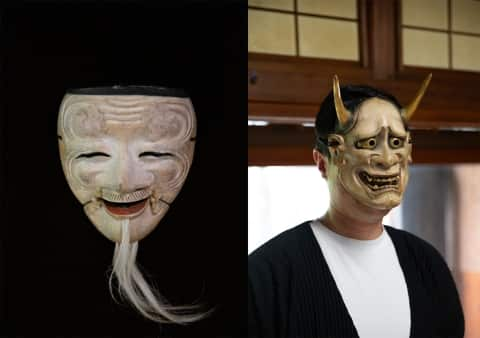
The distinctive wooden masks, hand-carved from the Hinoki cypress, were used exclusively in religious rituals and were incorporated into Noh to convey a range of emotions from joy to sorrow, anger to serenity, depending on the angle of the performer’s head and how the masks catch the light. Through rhythmic chanting and deliberate movements, the performers transport audiences to a different time and place, providing a closer look at Japan's cultural history that has survived through centuries of change.

Preserving the ancient craft in modern Kyoto
Over the centuries, Noh has remained a steadfast expression of Japanese identity, reflecting the cultural and historical soul of Japan. However, this art form is quietly fading from the public sphere, its painted masks now more commonly found on display than in active performance.
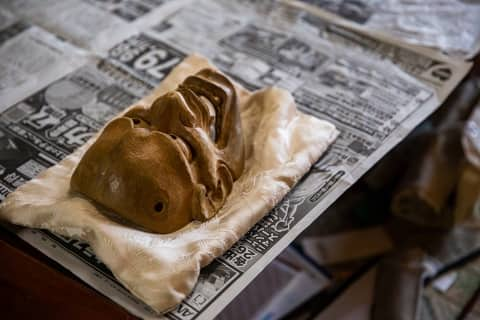
Nakamura works tirelessly to keep the time-honoured craft alive. Noh was not only practised in Kyoto, but also in Tokyo and Kanazawa, and there are artisans who make Noh masks in these regions.
Noh mask-making used to be a trade passed down exclusively from father to son for centuries. However, women have now also mastered the craft. Nakamura,for one, has made numerous masks to date, using the techniques that she has honed over the decades.
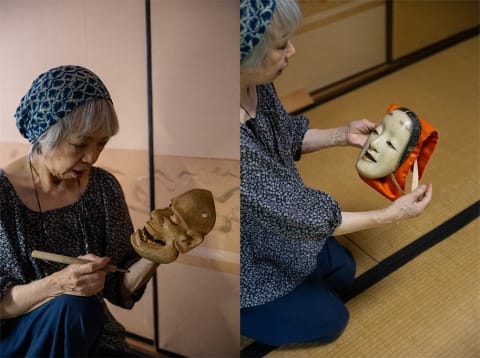
A Noh mask is a labour of love, requiring immense patience and dedication as it often takes up to a year to complete one. Yet, as a testament to her decades of experience and mastery, Nakamura can carve one in less than a month. She puts her heart and soul into every detail, from chiselling away at the blocks of hinoki to carving out the mask’s features to painting the mask. Now in her seventies, she has pulled together a team of female apprentices to ensure that this dying art will live on.
For visitors to Kyoto, a private visit to Nakamura’s studio offers an intimate look at the mask-making process and a chance to witness the remarkable artistry of Noh theatre.
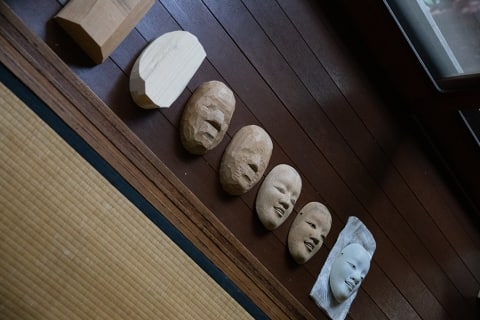
Banyan Tree Higashiyama Kyoto’s bamboo pavilion
Just a ten-minute drive from Nakamura’s studio lies Banyan Tree Higashiyama Kyoto, a tranquil retreat tucked away in the historic district of Higashiyama where the Noh tradition continues to flourish.
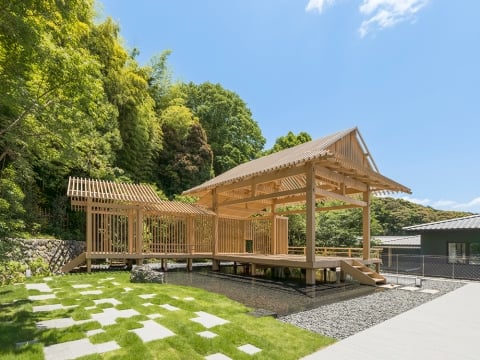
Designed by the renowned Japanese architect Kengo Kuma, Banyan Tree Higashiyama Kyoto is nestled on a hilltop next to Kyomizu-dera Temple, away from the bustle of the city. Featuring traditional Japanese architecture and modern design, this 52-room resort situated in the historic Gion and Higashiyama districts is the perfect combination of Kyoto’s ancient beauty and modernity.
Enveloped by a bamboo forest, this sanctuary for the senses is the first Banyan Tree hotel in Japan. It is also the only hotel in Kyoto that houses its very own Noh stage, reflecting Banyan Tree’s dedication to not just preserving the ancient art of Noh theatre, but also its emphasis on creating a strong sense of place through architecture, cuisine, and cultural experiences that are the essence of Kyoto. This specially constructed stage, set against a backdrop of bamboo forest, infuses meditative serenity into the space.
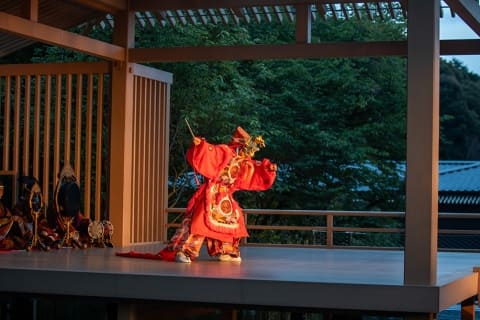
Other traditional cultural performances such as Gagaku, Japan’s imperial court music, Maiko shows performed by Kyoto’s apprentice geishas, as well as private tea ceremonies can also be arranged at guests’ request. Aside from the Noh stage that hosts intimate and authentic performances, guests can also immerse in Japan’s cultural heritage through a range of immersive activities and private cultural experiences at Banyan Tree.
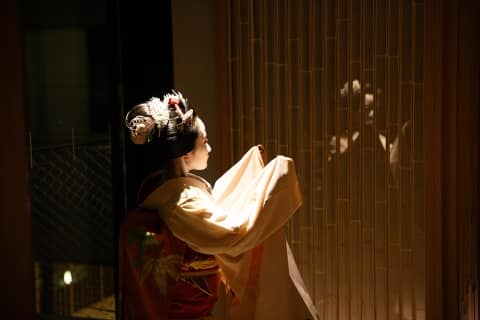
Experience culture come to life in Higashiyama Kyoto
Peel back the glossy modern-day image of metropolitan Kyoto and you will hear Japan’s cultural heart pulsing through the city, thanks to its traditional arts scene. In Kyoto, the past is alive in every corner, from Noh mask-makers’ workshops to serene temple rituals.
Banyan Tree Higashiyama Kyoto serves as a sanctuary and a gateway to Kyoto’s deeper traditions, offering guests more than just a place to stay—it invites them to engage with the art and history that shape the city’s soul. At Banyan Tree Higashiyama Kyoto, tradition isn’t just celebrated—it is preserved and protected, providing an intimate and immersive experience of Japan’s heritage. Here, guests can discover Kyoto layer by layer, and become participants in a new and profound experience.
Discover a sanctuary for the senses at Banyan Tree Higashiyama Kyoto.
